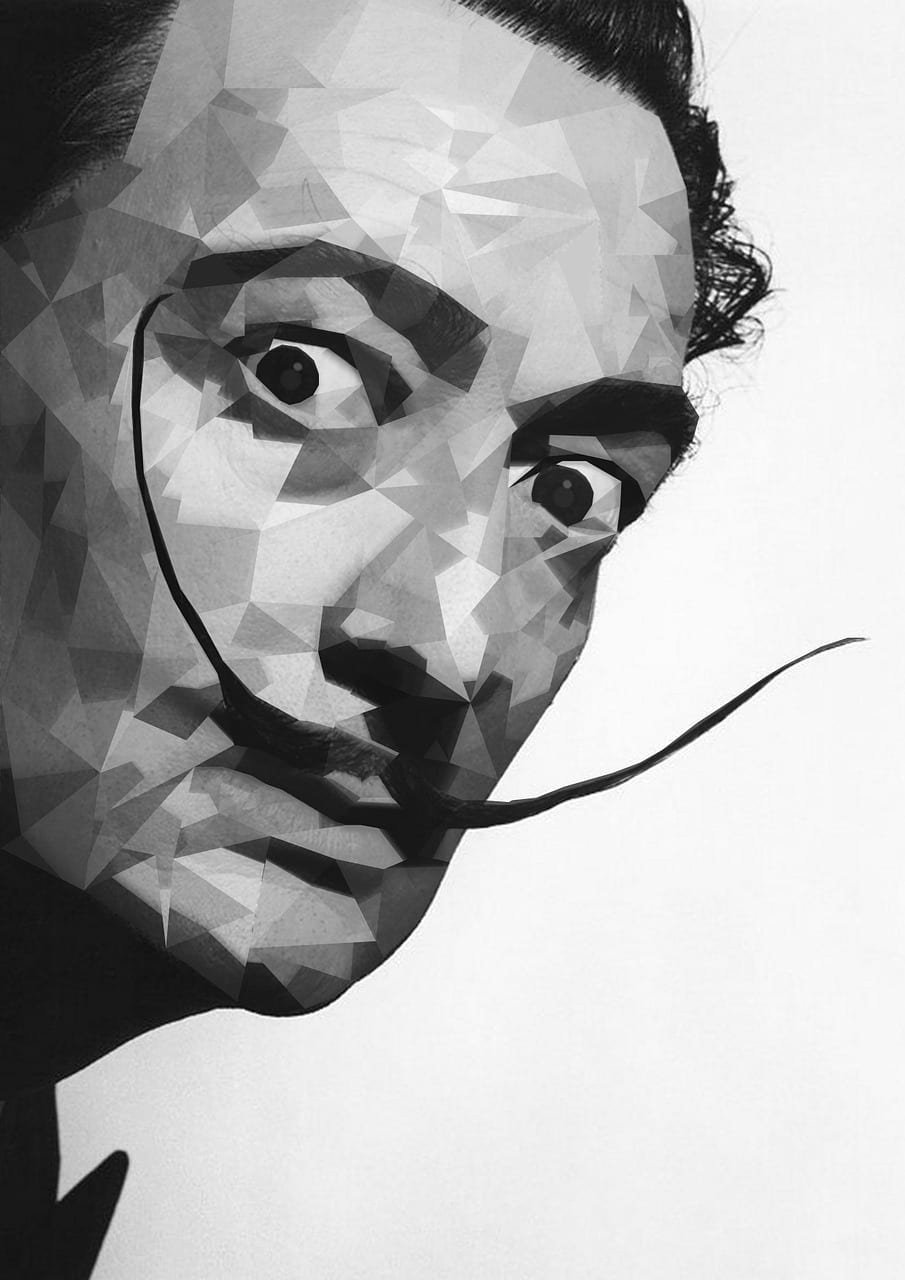
Salvador Dali, the renowned Surrealist icon and Spanish artist needs no introduction for art buffs. Apart from being an artist, Dali was also an author, filmmaker, performer and sculptor.
Dali was born in 1904 in Figueres in Spain and was encouraged to pursue art from an early age. He later went to Paris where he interacted with Miro, René Magritte and Pablo Picasso which gave him the first exposure to Surrealism.
While studying at Madrid based Academia de San Fernando, Dali’s eccentricity reached a new level as he experimented with his dressing style, hair and sideburns. While he was influenced at this stage by several artistic styles, he revered Picasso and painted many works that reflected Picasso’s influence.
Salvador Dalí is regarded to be the most prolific and versatile artists of the twentieth century who constantly experimented with new techniques and styles throughout his career.
Here is a brief overview of surrealism and a list of the five famous works of this great Surrealist.
What is surrealism?
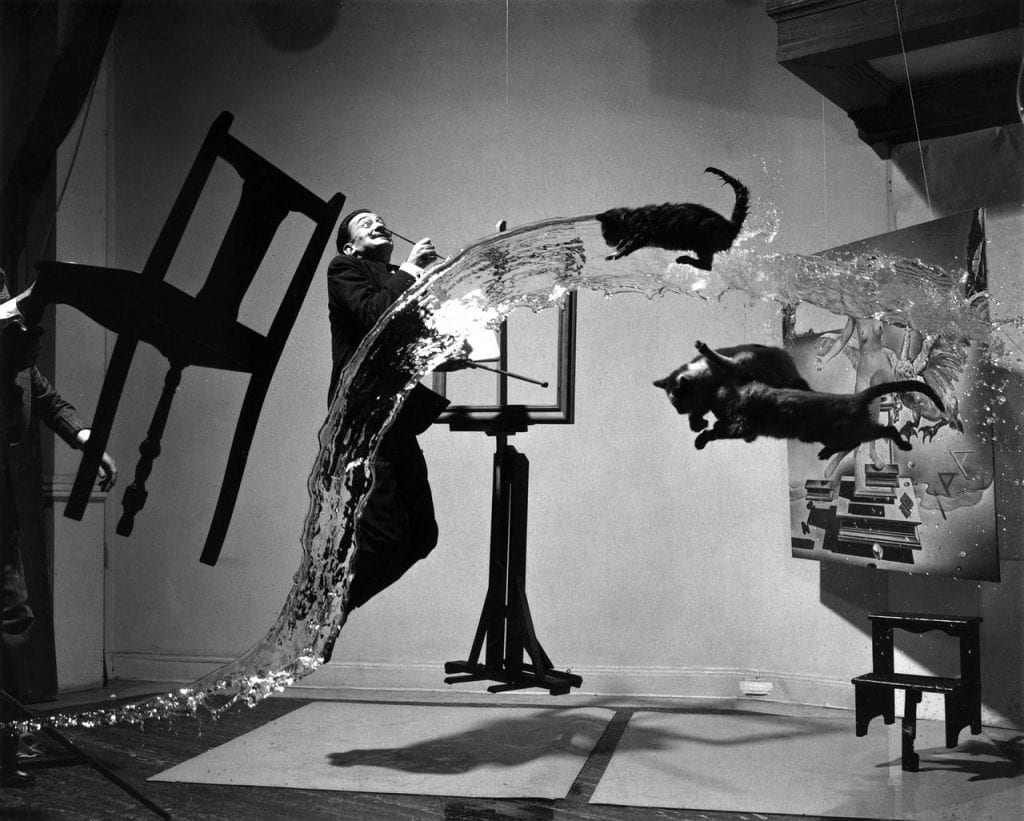
Surrealism is a literary and artistic movement that poet André Breton founded in 1924. The premise of the movement was that the intellectual, rationalistic movement of the eighteenth century suppressed the unconscious and irrational mind’s superior qualities. The goal of Surrealism was to liberate language, thought and experience from rationalism’s oppressive boundaries.
Surrealist artists including Salvador Dalí, Michael Cheval and Pablo Picasso among others seek to delve deep into the unconscious mind to create art. The result is a dreamlike, bizarre imagery as the artist focuses on portraying the deepest thoughts of the mind automatically as they surface.This mode of expression is known as ‘automatism’ where thoughts and images which come into the mind of the artist are reflected in the art in an uncensored way. In this way Surrealists challenge the limits of rationality and consciousness to create a ‘superior reality.’
Dali’s famous works
The Rhinoceros Dressed in Lace
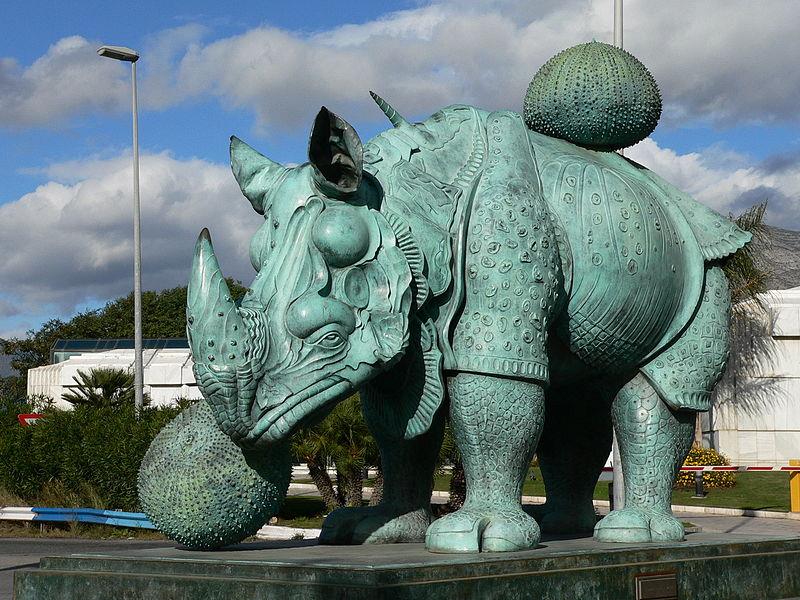
The Rhinoceros Dressed in Lace is a 30-meter high sculpture that Dali created in 1956 and through this sculpture, the surrealist paid homage to this cosmic creature. The three-dimensional sculpture illustrates the mighty animal as a symbol of virility and strength. This work is displayed at Puerto Banus in Spain as part of Dali Universe Collection.
The enormous animal was brought to Europe in 1515 for the first time from Asia and Dali’s obsession with the rhinoceros began when he was just nine years old. He could not separate this obsession from his admiration of Da Vinci and Vermeer. As a 43-year old in 1954, Dali’s obsession was at its peak and he sought permission at the Louvre to copy Vermeer’s Lacemaker. He rigorously traced the ‘logarithmic curves’ to create his own version. According to Dali, the rhinoceros belongs to the cosmic or surreal world and in the entire animal kingdom, the rhino horns were the only ones to feature a perfect logarithmic spiral.
The Nobility Of Time (La Noblesse Du Temps)

Dalí applied his spatial and figurative precision to all his surrealist dreamscapes. With technical brilliance and mastery over creation of illusion and perspectives, Dali’s surrealism succeeded where other surrealism work did not. While he experimented with different styles including cubism, modernism and others, his ability of letting old-fashioned painting depict disturbing modern themes is one of the facts that makes him extraordinary.
The expressive power of La Noblesse Du Tempscan be attributed to the conceptual metamorphosis of the surrealist genius’s views on the meaning of time and nature. This work represents a symbolic dimension of time where the observer oscillates around time’s enigmatic concepts and is introduced to the relativity between time and space. The Nobility of Time is reminiscent of another famous Salvador Dali painting- The Persistence of Memory which was painted in 1931 and is believed to be the best-known work of Dali. As a purist example of Surrealist art, Dali uses a series of clocks to depict time that appears to melt slowly on a tree branch and on the rocks in a barren ground with the ocean as backdrop. While Dali painted The Persistence of Memory when he was 27, he never explained this work.
In the much-reproduced iconic painting, Dali illustrates the concept of soft and hard where the melting clocks and rocks represent the world’s soft and hard aspects. Analysts also believe the work depicts the human mind transitioning to the hard reality from the softness of sleep. The melting clocks are also believed to be unconscious symbols of space and time and as a symbol of mortality as the watches are surrounded by ants representing decay
La Noblesse du Temps (The nobility of time) is on display at Plaça de la Rotonda in Andorra. The monumental bronze sculpture weighs 1,400 kilograms and stands 4.90 meters tall above the ground. As one of the frequently featured themes in Dali’s works, this sculpture depicts the passing time that dominates humanity. The soft, melting clock drapes around a tree, a symbol of eternal life. On the top of this clock is a crown showing that time is more powerful than man. On either side of the clock, a woman and angel draped in shawls contemplate.
The Space Elephant

The elephant, much like melting clocks, is a recurring theme in Dali’s works. The first depiction of elephants was in 1944 in a work titled Dream Caused by the Flight of a Bee Around a Pomegranate a Second Before Awakening. Swans Reflecting Elephants and The Temptation of Saint Anthony are the others that feature elephants. The elephants in Dali’s work have multi-jointed and long legs (“of desire”) while on their backs are obelisks.
The Space Elephant is a sculpture based on Dali’s 1946 painting – The Temptation of Saint Anthony – where an elephant with spidery long legs carries an obelisk. The elephant is depicted as walking in an Egyptian desert and is carrying an obelisk – a symbol of domination, power and desire. The artist suggests in his painting that such desires or temptations visited St. Anthony. The long, spidery legs of the elephant also signify desire.
Un Chien Andalou – An Andalusian Dog
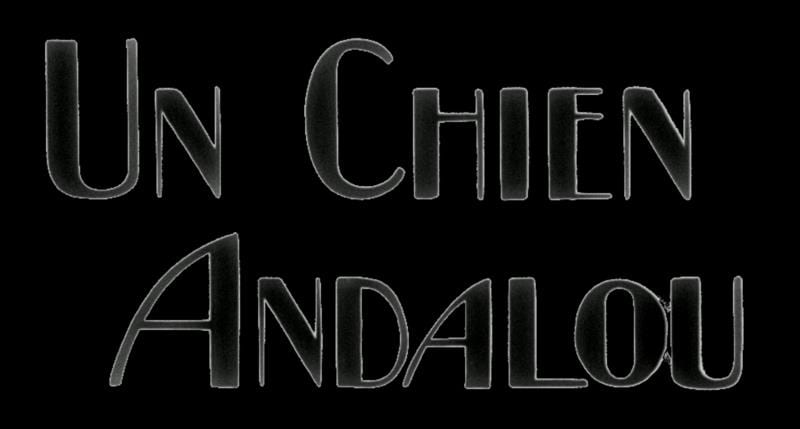
Un Chien Andalou translates to ‘An Andalusian Dog’ and is a surrealist, silent short film created by Salvador Dali and Luis Buñuel, the Spanish director in 1929. Dali met Luis Buñuel, the filmmaker, in Madrid while he was studying. While the duo first collaborated on Un Chien Andalou, L’Age d’Or (The Golden Age) was the second time Dali and Buñuel worked together. L’Age d’Or fully embraces Surrealism ideals and criticizes the Catholic church and bourgeois society.
The Franco-Spanish film was the first one that Buñuel created. The first screening of An Andalusian Dog was in Paris at Studio des Ursulines with the audience being le tout-Paris. The premiere was attended by some notable attendees including Pablo Picasso, Jean Cocteau, Le Corbusier, Georges Auric and Christian Bérard and Georges Auric. The positive reception that this film received amazed Buñuel while Dalí was reportedly disappointed as he felt the evening was “less exciting” because of the audience’s reaction.
In the conventional sense, Un Chien Andalou does not have a plot. The film has a chronology that is disjointed and jumps to eight years later from “once upon a time” without the characters or events changing. Expectedly, the film features a dream logic in its narrative flow typical of Freudian free association and surrealism. The creators of the film aimed to insult and shock the “intellectual bourgeoisie” or ‘avantgarde cine.’
Portrait of Madame Isabel Styler-Tas (Melancolia)
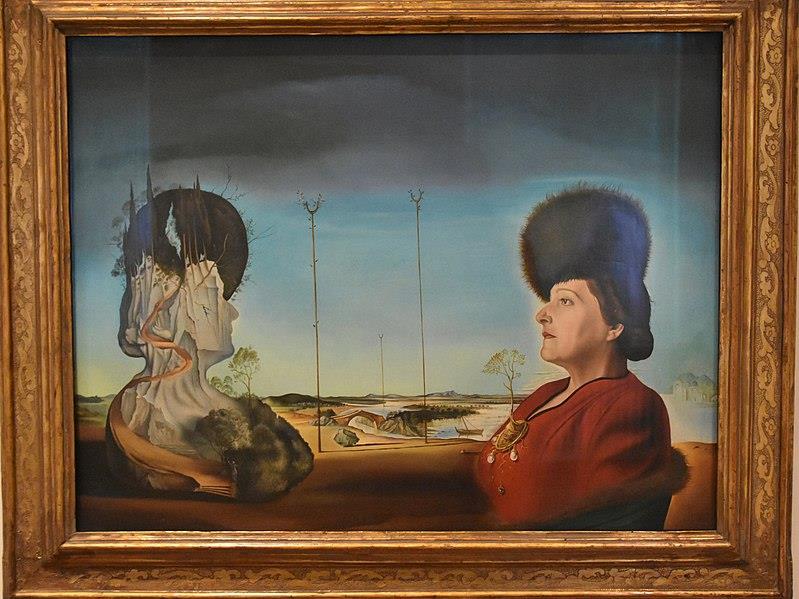
Portrait of Mrs. Isabel Styler-Tas was created by Salvador Dali in 1945. Mrs. Isabel Styler-Tas commissioned Dali to paint her portrait when the artist lived in the U.S. The painting is an egregious example of Dali’s surrealist hackery and his society portraiture received much flak at that period. In the 1940s, the surrealist realised that commissioned portraiture was an effective way to cash in on and leverage his fame. He dabbled in cinema, advertising, theme-park design, fashion and had earned great recognition as a modern European artist. The retrospective in 1941 at Museum of Modern Art in New York strengthened his brand recognition. He ensured he was available to clients and infused dreamscapes and surrealist gags in portraits including Helena Rubinstein as well as Isabel Styler-Tas.
In this portrait, the subject looks cold as ice beneath her enormous fur hat and her face is not beautiful. In the mirror image, her profile is formed on a hill’s rocky crags magically and the road that winds up her head leads nowhere. The hill in this mirror image represents Isabel Styler-Tas and is harsh, eyeless, rocky and is dead beneath its cosmetic vegetation.
The staggering aspects of this portrait is not just the cynicism, but the amount of hard work Dali has put into it. With layers of complexity and intensity infused in this painting, Dalí makes it difficult for it to be categorized as shallow.
L’Age d’Or
Dali met Luis Buñuel, the filmmaker, in Madrid while he was studying. The duo first collaborated in 1929 on Un Chien Andalou, a short film. L’Age d’Or (The Golden Age) was the second time Dali and Buñuel worked together. The film fully embraces Surrealism ideals and criticizes the Catholic church and bourgeois society. The film failed to win unanimous support and in fact offended many viewers.

Lobster Telephone
The subconscious mind and interplay between seemingly unrelated things are concepts that are central to surrealism. Objects, experiences and locations are literal as well as representative in surrealism. The Lobster Telephone was created in 1936 where Dali exemplified this concept by blending two unrelated concepts of lobster and telephone. While individually the lobster claw and the telephone look unremarkable, the pairing creates a shocking effect.

